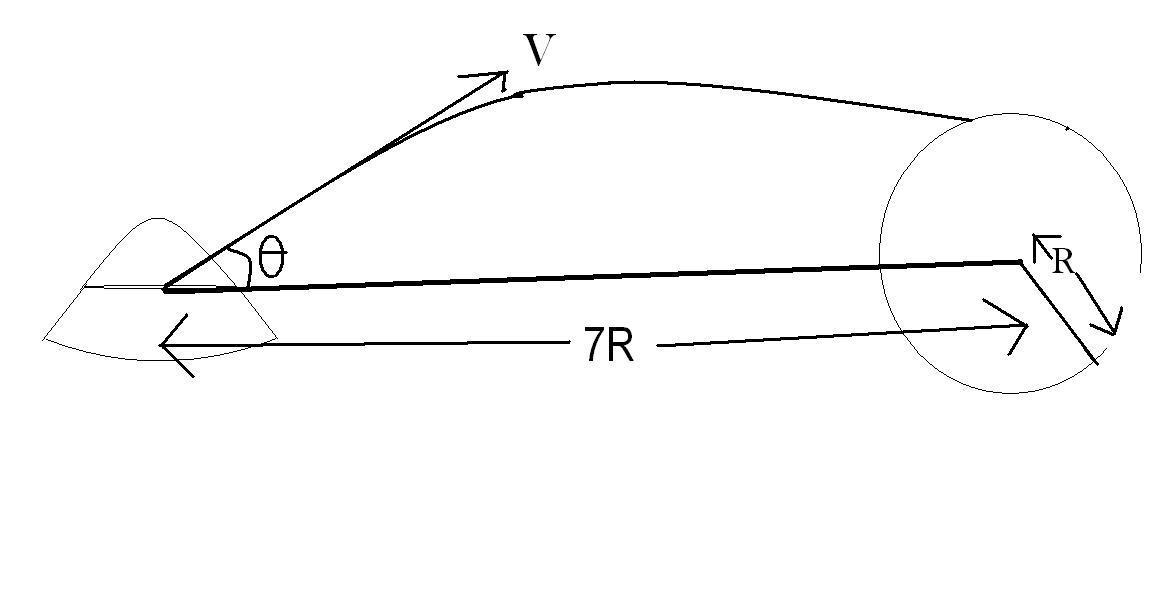ET arrives at an alien angle
 and his fellow aliens have boarded a spaceship to our planet, Earth of mass
and radius
. While hanging motionless in space at a distance of
from the center of Earth, the spaceship fires with velocity
, a package in which the aliens are huddled together. Consider the total mass of the package to be
, where
.
and his fellow aliens have boarded a spaceship to our planet, Earth of mass
and radius
. While hanging motionless in space at a distance of
from the center of Earth, the spaceship fires with velocity
, a package in which the aliens are huddled together. Consider the total mass of the package to be
, where
.
Find the angle of projection for which the package will just graze the surface of Earth.
Details and Assumptions :
- Grazing means to make tangential contact.
This question is part of the set Best of Me
The answer is 10.8682.
This section requires Javascript.
You are seeing this because something didn't load right. We suggest you, (a) try
refreshing the page, (b) enabling javascript if it is disabled on your browser and,
finally, (c)
loading the
non-javascript version of this page
. We're sorry about the hassle.
Let ′ v ′ be the velocity of the package when it grazes the surface of earth.
Since the origin of the frame is located at the center of earth, for the system ′ s p a c e s h i p + p a c k a g e ′ , the external torque is 0 because the forces acting on it are radial. So the angular momentum is conserved. Furthermore, the final velocity vector of the package has to be perpendicular to the position vector, otherwise the instrument package would crash on earth , so:
L i n i t i a l = L f i n a l , where L is the angular momentum of the defined system.
=> 7 m v 0 R sin ( θ ) = m v R sin 9 0
=> 7 v 0 sin ( θ )= v ....... ( i )
Now, by conserving energy, we get: 2 m v 0 2 − 7 R G M m = 2 m v 2 − R G M m => v 2 − v 0 2 = 7 R 1 2 G M .... ( i i )
Now, Squaring E q ( i ) , rearranging and replacing in E q ( i i ) , we get: v 0 2 ( 4 9 sin 2 ( θ ) − 1 ) = 7 R 1 2 G M
THEREFORE , sin ( θ ) = 7 1 1 + 7 v 0 2 R 1 2 G M
Plugging in the values, we get: ( θ ) = sin − 1 ( 7 1 . 7 4 2 )
THEREFORE, p + q = 8 . 7 4 2 : )